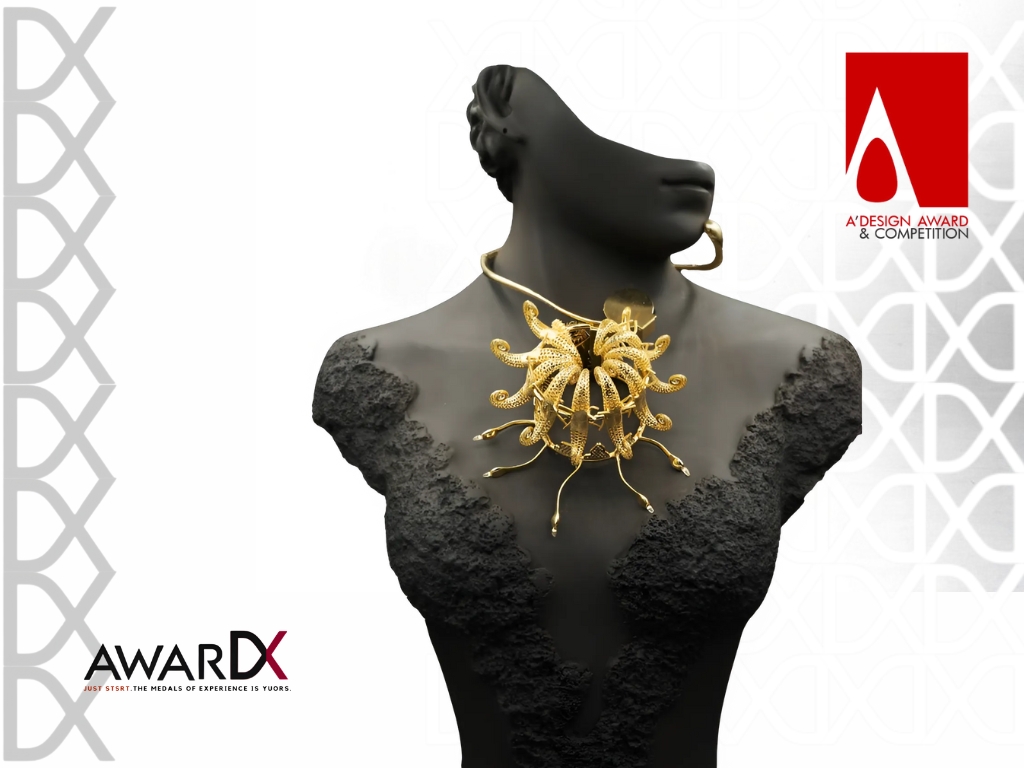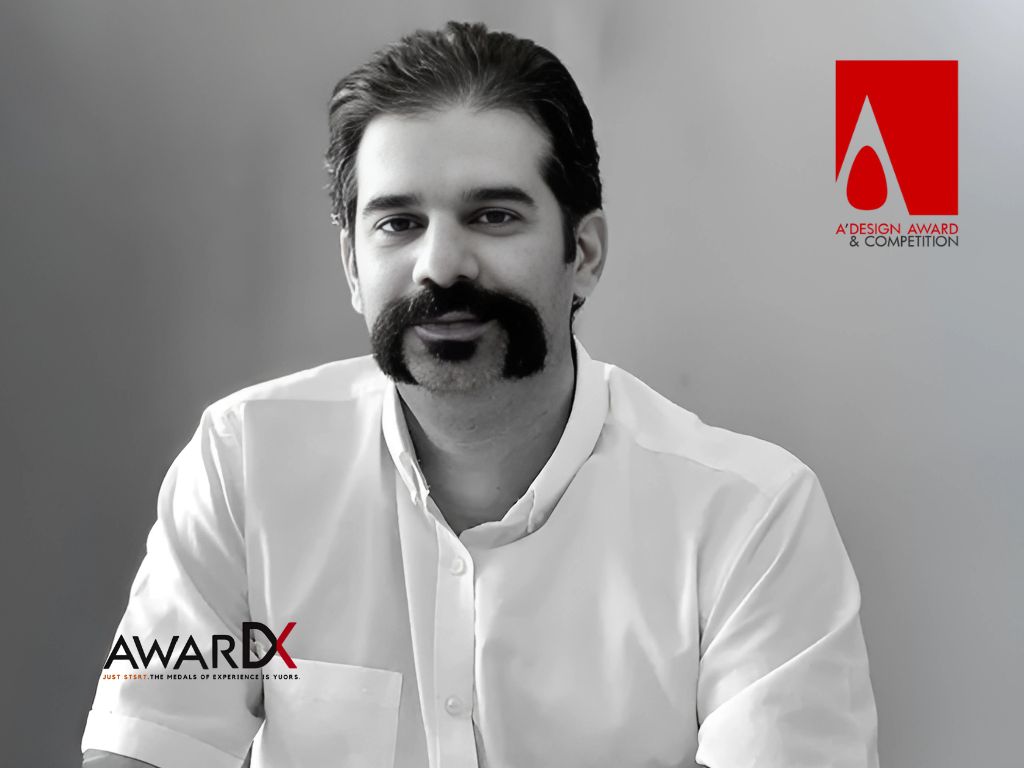Esra Erciyes is a contemporary jewelry designer whose practice blends poetic narrative, meticulous craft and micro-mechanical ingenuity. Her award-winning piece, the Secret of Eternity necklace and brooch, is a compact manifesto of that approach: an object that reads as jewelry, sculpture and a tiny engineered mechanism all at once. The project’s recognition at an international design competition underscored its success in merging storytelling with technical refinement.
Product at a glance — what “Secret of Eternity” is
The Secret of Eternity is a convertible jewelry system that functions as both a necklace and a brooch. Visually it evokes cyclical motifs — rings, spirals and nested forms — intended to symbolize continuity, memory and the passage of time. Mechanically it contains clever attachment points and a discreet locking mechanism that allow components to be reconfigured quickly and securely: worn centered as an ornamental brooch, or expanded and suspended as a pendant necklace with a different spatial reading. The duality of the object — static ornament and transformable device — is central to its appeal.
Designer mindset — intent, symbolism and user experience
Esra began the project with three concurrent intentions. First, she wanted to create an object that carried a strong metaphor: eternity as recurrence, not stasis. Second, she aimed for emotional resonance — jewelry that invites touch, contemplation and storytelling. Third, she insisted on practical elegance: every formal choice must also serve function. The guiding belief was that a piece of jewelry can be both evocative and rigorously engineered — able to surprise, to be worn in multiple ways, and to age as an heirloom rather than a trend object.
Concept development — turning metaphor into form
The concept phase translated abstract metaphors into physical rules. Esra sketched variations on concentric rings, broken circles and nesting elements, then used sequence diagrams to map how the piece would transform between states. These diagrams defined connection points, rotation allowances and the order of assembly so that the emotional arc (from closed form to open pendant) aligned with the mechanical sequence. Early work prioritized silhouettes that read beautifully both flat (as a brooch) and volumetrically (as a necklace).
Materials and surface strategy
Material choices were driven by tactile quality, fatigue resistance and surface narrative. Precious metals (for example, sterling silver or gold vermeil in different editions) provided a warm, lasting finish and the necessary mechanical resilience for repeated transformations. Surface treatments — brushed, matte, high polish or selective patination — were chosen to emphasize layers and to create visual contrast between mobile and static components. Where color accents were used (enamel, inlay or small gemstones), they served as orientation cues for reconfiguration rather than mere decoration.
Prototyping the mechanism — small-scale engineering
Because the Secret of Eternity performs multiple mechanical functions in a compact volume, the prototyping phase was extensive and iterative. Key steps included:
Rapid sketching to lock silhouette and range of motion.
3D printed mockups in resin to validate clearances, engagement points and the human scale of key parts.
Metal test pieces to assess wear at pivot points and the tactile feel of locks and snaps.
Multiple spring and friction tests to ensure that moving parts offered confident motion without being too loose or too stiff.
Each iteration prioritized reliability: the mechanisms had to feel precise, not fiddly, and they had to withstand everyday wear.
Detail engineering — joints, locks and tolerances
The micro-mechanics in Secret of Eternity rely on a combination of guided pivots and concealed snap locks. Critical engineering considerations included:
Minimizing play while avoiding binding — small radiuses and precise clearances were specified.
Selecting micro-springs and bearing points that deliver smooth rotation and positive tactile feedback.
Ensuring that locking surfaces have enough bearing area to avoid localized wear over time.
Designing for serviceability — fasteners or access points allow a trained jeweller to replace wear components without destroying the piece.
This attention to detail makes the transformations feel deliberate and luxurious rather than precarious.
Craftsmanship & finishing — the human hand in a technical object
After mechanical validation, final production reintroduced hand finishing and traditional bench techniques. Casting, filing, stone-setting and polishing were carried out by experienced bench jewellers to ensure tactile quality and surface continuity. Final assembly — aligning pivots, setting micro-springs and adjusting gnash points — was performed by hand so that each piece left the studio with calibrated motion and a consistent visual language.
Wearability and user testing
Practical wear tests were essential. Esra and her collaborators tested the piece on different body types, collar styles and movement scenarios to ensure comfort and secure fit. Key adjustments from testing included chain length options for the necklace mode, subtle curvature to the brooch back for flat-lie comfort, and length-matched pins to ensure the brooch sat consistently on varied fabrics. These refinements turned conceptual beauty into reliable daily wearability.
Manufacturing considerations — from atelier to small batch
Secret of Eternity was developed with small-batch production in mind. The design balances bespoke assembly steps with reproducible mechanical components: cast parts and stamped plates are combined with hand-assembled pivots and springs. This hybrid model supports consistent quality while enabling limited-edition variations (different metals, finishes, or accent stones). Quality control focuses on mechanical repeatability, finish uniformity and assembly tolerances.
Presentation and storytelling — framing the piece for buyers
When presenting Secret of Eternity to collectors and retailers, Esra emphasized three narrative layers: concept (the symbolic meaning), craft (the making story and micro mechanics) and use (how the piece transforms and is worn). Visual materials typically include hero images of both modes, annotated close-ups of locking features, and short videos demonstrating the transformation. Packaging supports the story with a small booklet describing the motif and care instructions — a tactile experience that matches the piece’s technical and emotional ambitions.
Aftercare, maintenance and longevity
Because the necklace contains moving parts, owners are provided with clear aftercare guidance: avoid harsh chemicals, have moving parts checked annually, and use a jeweller-approved lubricant for pivot points if motion becomes stiff. Esra’s studio recommends an authorized service option for mechanical inspection and adjustment, which also creates an ongoing relationship with buyers and helps maintain the piece as an heirloom.
Awards and market impact
Recognition from international juries helped amplify Secret of Eternity’s visibility. Awards functioned as both credibility signals and marketing accelerators — opening doors to gallery exhibitions, limited retail placements and editorials. For Esra, the award translated into inquiries for bespoke commissions and invitations to collaborate on curated collections, validating the strategic value of combining narrative design with robust engineering.
Commercial positioning — who buys Secret of Eternity and why
The piece appeals to several buyer segments: collectors of kinetic or conceptual jewelry, patrons who value transformable high jewellery with a story, and boutiques seeking standout, limited-edition items. Its convertible nature increases perceived utility — one purchase offers multiple looks — while the mechanical sophistication justifies a premium price and positions the work as collectible rather than disposable.
Curatorial & editorial opportunities
Secret of Eternity photographs and films exceptionally well. Editors and curators often present it with: a hero shot in one configuration, a kinetic GIF showing transformation, and a process image highlighting micro mechanics. In exhibitions, pairing the piece with explanatory diagrams or a short video loop allows viewers to appreciate both the poetic and engineering dimensions.
Business lessons from the project
Start with a strong narrative but translate it into measurable functional requirements.
Prototype early and in the materials (resin → metal tests → hand assembly) to expose mechanical problems before final casting.
Combine digital precision with hand finishing to preserve luxury feel.
Offer aftercare and service options — mechanical jewelry benefits from a post-sale relationship.
Use award recognition strategically to accelerate editorial and retail opportunities.



